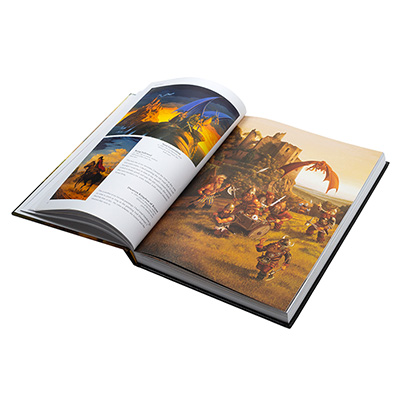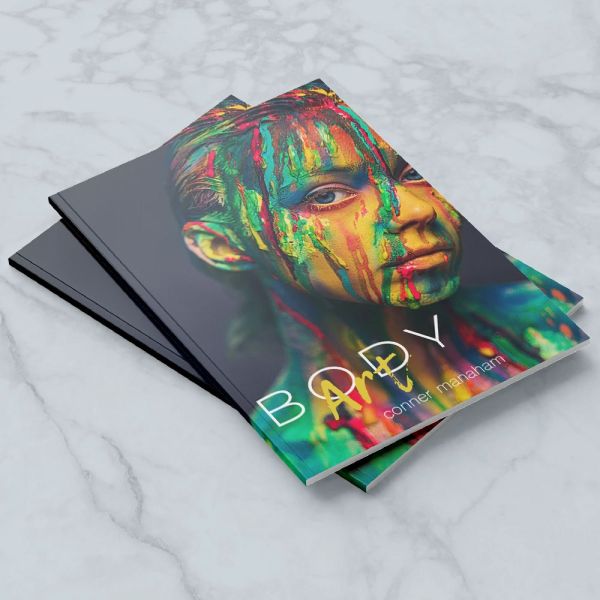Your Guide to Budgeting a High-End art book Production
Discover the Essential Overview to Art Book Printing for Aspiring Artists and Publishers
As an aspiring musician or author, comprehending the subtleties of art book printing is necessary to bringing your vision to life. You'll require to take into consideration different factors, from selecting the appropriate sort of book to making certain color precision and picking suitable materials. Each choice influences the end product significantly. So, what are the key aspects you should concentrate on to create a sensational art book that truly represents your job?
Recognizing Different Sorts Of Art Books
When you plunge into the globe of art publications, you'll promptly discover that they come in different kinds, each tailored to different creative expressions and audiences. Coffee table books commonly display sensational visuals, excellent for informal surfing, while essays dive deep right into a private artist's work, offering context and insights. If you're interested in particular art motions, exhibition brochures provide comprehensive documentation of shows, including essays and reviews.
For instructional objectives, art handbooks and technique publications guide you via various tools and styles, making them crucial for striving artists. Each style offers its function, and recognizing their distinctions can boost your art book journey.
Choosing the Right Paper and Products
Picking the right paper and materials can substantially impact the overall high quality and feeling of your art book. For vivid colors and elaborate information, decide for a shiny coating or a heavyweight matte paper that enhances visual deepness.
Consider the weight of the paper, too. Thicker options usually lend a more professional appearance, while lighter papers can minimize printing expenses. Do not forget the binding products; a sturdy cover can protect your pages and include in the book's aesthetic.
Finally, consider sustainability. Environmentally friendly choices are getting popularity and can reflect your values as a musician. By meticulously picking your paper and products, you'll ensure that your art book not only looks terrific but also really feels unique in the hands of your visitors.

Picking the Finest Printing Techniques
When it involves printing your art book, picking between offset and digital printing can considerably influence your end product. You'll likewise wish to think about how paper top quality affects the total look and feeling of your artwork. Let's discover these crucial printing strategies to discover the ideal fit for your task.
Offset vs. Digital Printing
While both countered and digital printing have their benefits, picking the right strategy for your art book can considerably influence the end product. Countered printing provides high-quality pictures and vivid colors, making it suitable for bigger print runs. If you're wanting to generate hundreds or thousands of copies, counter will certainly give you constant outcomes and reduced per-unit costs. On the other hand, electronic printing succeeds for smaller sized quantities and quicker turnaround times. It permits very easy customization, enabling you to print special copies without extra configuration prices. Consider your budget, timeline, and the volume of your job. Eventually, your selection should align with your artistic vision and distribution method, making certain that your art book mirrors the quality you desire.
Paper Top Quality Factors To Consider
Picking the appropriate paper top quality can considerably improve the visual appeal and responsive experience of your art book. Beginning by taking into consideration the weight and structure of the paper. Much heavier paper frequently feels even more extravagant and can much better showcase vibrant shades and complex details. For prints, a shiny coating can make pictures pop, while a matte finish provides a softer, extra subtle look. Do not fail to remember about the paper's illumination; brighter sheets can improve color precision and contrast.
Next, think of the sustainability of your choice. Eco-friendly alternatives are becoming significantly popular and can interest environmentally-conscious readers. Demand examples to see how various papers function with your art work, guaranteeing the last product reflects your vision completely.
Ensuring Shade Accuracy in Your Prints
To attain magnificent prints, you need to concentrate on shade precision from the beginning. You'll intend to utilize shade calibration techniques to verify your display and printer are in sync. Furthermore, proofing your job before the final print run can assist capture any inconsistencies, assuring your art looks simply as you visualized.
Color Calibration Methods
Ensuring color accuracy in your prints begins with efficient color calibration techniques that aid keep uniformity between your digital photos and last printed items. Next off, pick a color account matched for your printing procedure, like CMYK for print materials. By regularly applying these strategies, you'll improve the general quality of your art prints and far better communicate your artistic vision.
Proofing for Precision
While you may think your electronic pictures await print, proofing is essential for attaining color precision. Before committing to a complete print run, always ask more info here for a proof from your printer. This permits you to see exactly how shades equate from screen to paper. Contrast the proof with your adjusted monitor to detect any type of discrepancies. Take notice of saturation, illumination, and shade, as these elements can significantly influence your final product.
If adjustments are required, communicate plainly with your printer about your preferred end results. Don't wait to request several proofs if essential; it's worth the financial investment to get it right. Inevitably, detailed proofing assurances that your artwork is stood for as you visualized it, preserving your artistic integrity throughout the printing process.

Creating Layouts That Enhance Your Art Work
When you develop layouts for your art book, it's vital to contemplate exactly how each element engages with your artwork. Go for a balance between visuals and text, making sure neither outweighes the various other. Usage white area tactically; it provides your artwork room to take a breath and attracts focus to its information.
Think about the flow of your book. Arrange images in a way that overviews the visitor's eye, producing a narrative or thematic development. art book. Vary the dimensions and alignments of your art work to keep the layout vibrant and fascinating
Select font styles that complement your art work without sidetracking from it. Keep text succinct and appropriate, offering context or understanding that boosts the customer's experience.
Finally, examination various layouts. Publish examples to see how the layouts equate on paper, and readjust as needed. By thoughtfully making your formats, you'll produce an aesthetically appealing art book that resonates with your target market.
Binding Choices for a Professional End Up
Selecting the right binding option can greatly affect the overall discussion of your art book. You'll intend to take right into account both visual appeals and resilience when making your selection. Popular choices consist of ideal binding, which offers a smooth appearance and is best for thicker publications; saddle stitching, perfect for smaller pamphlets; and spiral binding, which allows web pages to lay flat for very easy viewing.
If you're intending for a premium feeling, case binding is a superb option, giving a durable cover and a specialist look (art book). Do not forget regarding the cover product; options like fabric, natural leather, or a glossy surface can boost your book's appeal
Whatever alternative you select, ensure it enhances your artwork and enhances the visitor's experience. Take your time to consider the pros and cons of each technique, so your last product mirrors the top quality great site of your innovative vision.
Preparing Your Declare Publish Preparedness
To assure your art book is print-ready, you'll need to pay close interest to file prep work. Start by setting your record dimension to match your desired print measurements. Usage high-resolution pictures-- 300 DPI is the criterion-- to identify sharp, lively visuals. Convert your files to CMYK mode, as this color room is best for printing. Do not neglect to include bleed areas, generally an extra 0.125 inches around your web pages, to avoid any white edges after trimming.
Take into consideration developing an evidence to review before the final print run. Complying with these steps will certainly aid you achieve a polished, specialist art book.
Often Asked Concerns
What Is the Average Expense of Publishing an Art Book?
The standard expense of printing an art book differs, yet you can anticipate to pay anywhere from $5 to $20 per copy, depending upon elements like size, paper top quality, and printing volume.
Exactly How Can I Find a Reliable Printing Company?
To locate a dependable printing firm, begin by researching on-line reviews and asking other musicians for referrals. Compare quotes, inspect profiles, and communicate your demands clearly to guarantee they recognize your vision and high quality expectations.
What Is the Regular Turn-around Time for Printing?
The typical turnaround time for printing varies however typically ranges from one to four weeks. Variables like job intricacy and quantity can affect this. Constantly confirm with your selected printer my website for particular timelines and expectations.
Can I Print My Art Book in Limited Quantities?
Yes, you can absolutely publish your art book in minimal amounts. Several printing companies use short-run choices, enabling you to create simply the number you require, making it simpler to manage expenses and inventory.
What Legal Factors To Consider Should I Know for My Art Book?
You must think about copyright, licensing arrangements, and version releases when producing your art book. Make specific you have the right to make use of all photos and message, protecting on your own from potential legal issues in the future.